Scientific name Pseudocerastes Order Scaled reptiles | Subphylum Vertebrata Species P. persicus | |
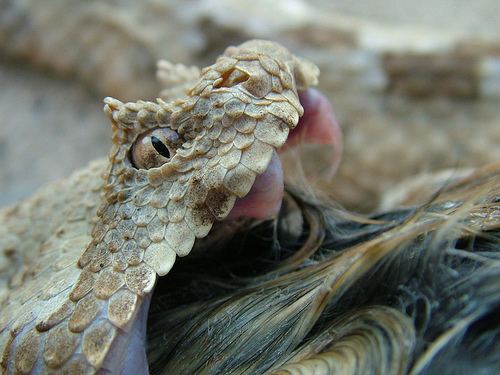 | ||
Lower classifications Spider‑tailed horned viper, Pseudocerastes persicus fieldi | ||
Pseudocerastes fieldii feeding
Pseudocerastes is a genus of venomous vipers endemic to the Middle East and Asia. It was originally a monotypic genus created in 1896 by Boulenger for the species Pseudocerastes persicus. Due to taxonomic revision and recent discovery, the genus may currently contain as many as three species.
Contents
- Pseudocerastes fieldii feeding
- Pseudocerastes urarachnoides iran
- Description
- Common names
- Geographic range
- Behavior
- Reproduction
- Venom
- Subspecies
- Taxonomy
- References
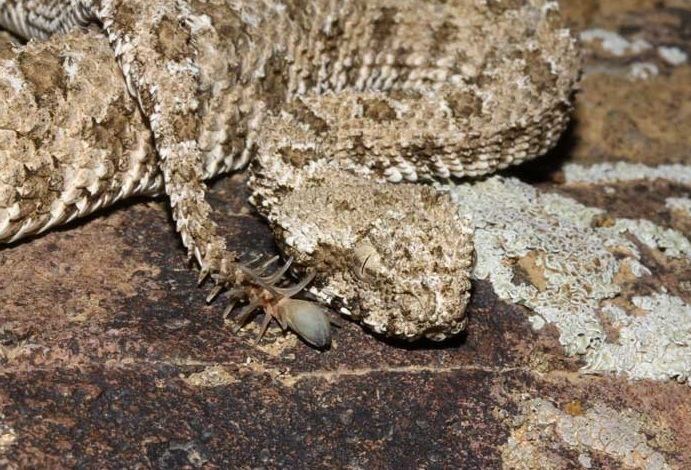
Pseudocerastes are often referred to as false horned vipers because of the horn-like structures above their eyes that are made up of numerous small scales. This is in contrast to the "true" horned viper, Cerastes cerastes, which has similar supraorbital "horns", each consisting of a single elongated scale. Two subspecies are currently recognized, including the nominate subspecies, Pseudocerastes persicus persicus, described here.
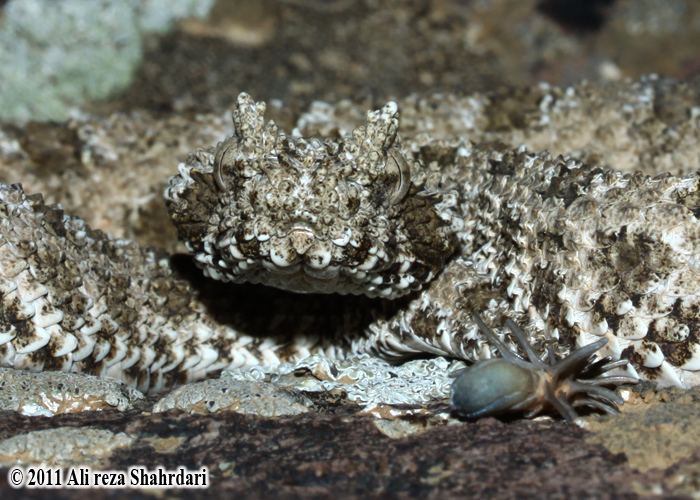
Pseudocerastes urarachnoides iran
Description
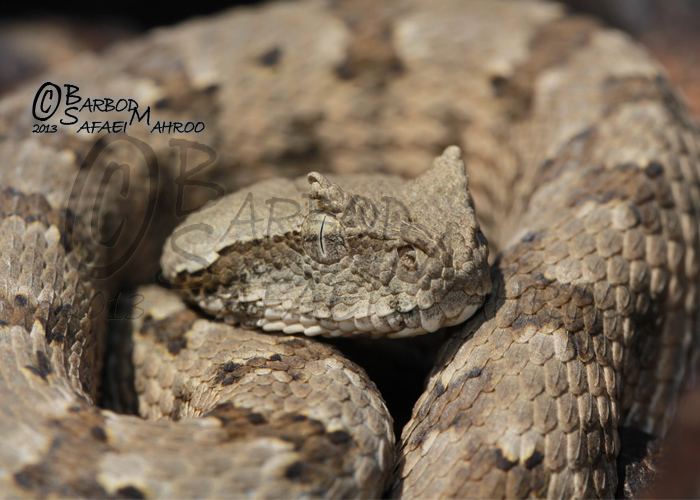
Adults averages between 40 to 70 cm (16 to 28 in) in total length (body + tail), with a maximum total length of 108 cm (43 in) being reported. Females are usually larger than males. These snakes can attain a considerable weight relative to their size, with specimens sometimes exceeding 500 g (1.1 lb).
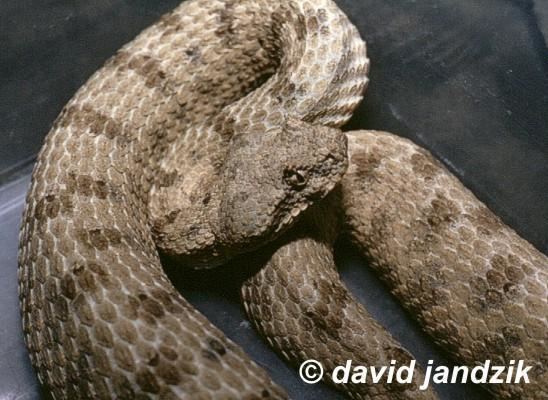
The head is broad, flat, distinct from the neck and covered with small, imbricate scales. The snout is short and rounded. The nostrils are positioned dorsolaterally and have valves. The nasal scale is unbroken. The rostral scale is small and wide. The eyes are small to average in size. There are 15-20 interocular scales and 15-20 circumorbitals. The supraorbital hornlike structure above each eye consists of small, imbricate scales and is also present in juveniles. There are 11-14 supralabials and 13-17 sublabials. 2-4 rows of small scales separate the supralabial scales from the suboculars.
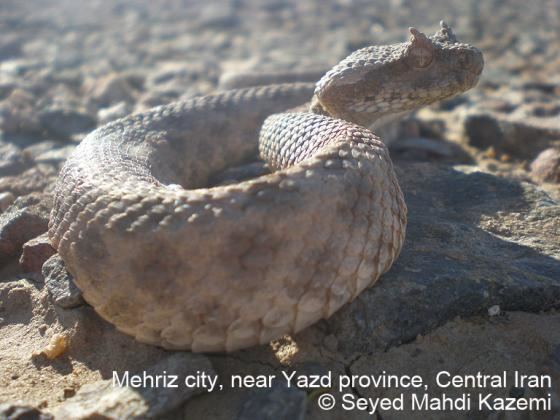
The body is covered with weakly to strongly keeled dorsal scales. On many of these, the keel terminates before the end of the scale and forms a bump. Many others form a point. At midbody, there are 21-25 scale rows, none of them oblique. There are 134-163 ventral scales and 35-50 paired subcaudals. The tail is short.
Common names
Persian horned viper, false horned viper, Persian horned desert viper, eye-horned viper.
Geographic range
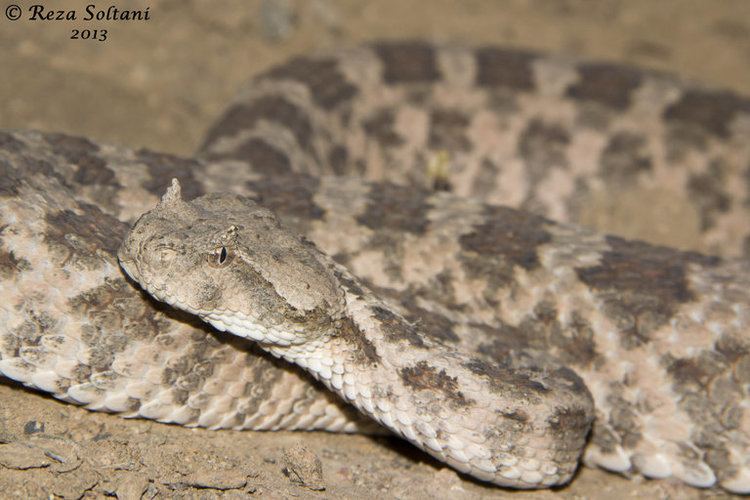
P. persicus is found in the Sinai of Egypt, Israel, Jordan, northern Saudi Arabia, the mountains of Oman, northern and northwestern Iraq, possibly southern Syria, extreme southeastern Turkey, northwestern Azerbaijan, Iran, and Pakistan to the borders of Afghanistan.
The type locality is listed as "Perse" (= Persia).
Behavior
These snakes are generally rather slow-moving and may employ various methods of locomotion, including sidewinding, serpentine, and rectilinear. These snakes are almost totally nocturnal, only being seen during the day or early evening during colder periods. It is not particularly aggressive, but will hiss loudly when disturbed. It is not capable of sinking into the sand vertically like Cerastes.
Reproduction
Pseudocerastes is oviparous, and sexually mature females lay 11-21 eggs. When produced, these already contain well-developed embryos, each of which can be as much as 8.5 cm (3.3 in) in total length. As a result, they hatch after only 30–32 days at 31 °C and then measure 14.0 to 16.2 cm (5.5 to 6.4 in) in total length. They do well in captivity and are relatively easy to breed.
Venom
P. persicus venom exhibits strong hemorrhagic activity typical of most vipers. No antivenom is available for bites from this subspecies, although it is reported that a polyvalent antiserum does offer some protection.
Subspecies
These two subspecies are allopatric.
Taxonomy
Some sources elevate P. p. fieldi to species level.
In 2006, Bostanchi, Anderson, Kami and Papenfuss described a new species: P. urarachnoides. It is found in the Zagros Mountains of western Iran and is described as having the most elaborate tail ornamentation of any snake yet described, save for the rattlesnakes, Crotalus and Sistrurus.
